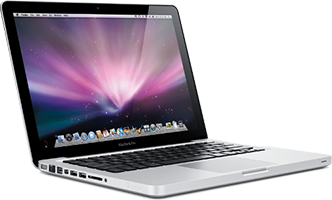Un white paper elaborato da Edge-Core/SMC Networks sul protocolo IPv6
What is an IP address?
An IP (Internet Protocol) address is the unique number that identifies a network connected device (computer, router port, switch port, etc.) on the Internet (for example, 128.111.200.3). Network administrators and other knowledgeable computer users can easily change IP addresses to be able to communicate with existing networks or follow hardware, unlike MAC (or physical) addresses which cannot be changed under normal circumstances.
What is the difference between an IPv4 and an IPv6 address?
The Internet as it is currently deployed uses a 32‐bit version of IP addresses. These addresses are now known as IPv4 to distinguish them from next generation IP addresses, which use a 128‐bit version of IP addresses, IPv6. IPv6 is officially defined as a suite of protocols and standards developed by the Internet Engineering Task Force (IETF).
What was the impetus for creating IPv6 addresses?
The main reason for the current evolution from IPv4 to IPv6 is the severe depletion of the pool of unallocated IPv4 addresses—several regions of the world have already exhausted their allocation and remaining areas will soon follow suit within the next year or two. This is serious because one of the critical differences between IPv4 and IPv6 is the number of available IP addresses. For example, there are 4,294,967,296 IPv4 addresses. In contrast, there are 340,282,366,920,938,463,463,374, 607,431,768,211,456 IPv6 addresses. Creating a supply of more addresses is necessary given the continuing, explosive growth worldwide of web portals, consumer devices such as smart phones, and web applications, especially in Asia, the world’s growth leader and the biggest manufacturer of IPv6‐enabled devices.
What are the implications of the changeover to IPv6 for business?
There are a number of important issues businesses will have to consider as they prepare for a networking environment that will soon be predominantly IPv6 based. For example, some devices that use IPv4‐only software cannot support IPv6 without an upgrade. And if the hardware is particularly old, even memory and software upgrades will not provide the full support for IPv6 features. Furthermore, since IPv6 addresses are larger, they require more time to process by both hardware and software.
On the other hand, the technical functioning of the Internet remains the same with both versions and it is likely that both versions will continue to operate simultaneously in networks within networks well into the future. To date, most networks that use IPv6 support both IPv4 and IPv6 addresses on their networks. In fact, several recent studies indicate IPv6 traffic counts for less than five percent of all Internet traffic today.
What are some of the key benefits and opportunities associated with IPv6?
Efficiency and simplicity, improved security, and support for new services. IPv6 makes routing more efficient and hierarchical because it allows the reduction of the size of routing tables. In addition, IPv6’s simplified packet header makes packet processing smoother and more efficient, for example, because there is no IP‐level checksum, the checksum doesn’t have to be recalculated at each router hop. IPv6 is also more efficient dealing with network bandwidth as it supports multicast packets rather than broadcast packets. The result is disinterested hosts no longer have to process broadcast packets for bandwidth –heavy packet flows like multimedia streams. Another significant improvement is that address auto‐configuration was built into IPv6 from the ground floor, thus greatly simplifying network configuration.
IPv6 delivers fundamentally stronger security because of the incorporation of the IP security protocol suite into IPv6 architecture. Specifically, IPSec, which provides authentication, confidentiality, and data integrity, is baked into IPv6. Previously, IPv4 ICMP packets would often be blocked by corporate firewalls due to their potential to carry malware. Now with IPv6 deployed, ICMPv6, the implementation of the Internet Control Message Protocol for IPv6, may be permitted because IPSec can be applied to the ICMPv6 packets, thus creating a more secure network.
IPv6 removes Network Address Tables (NATs), allowing more seamless peer‐to‐peer interactions and a multitude of new business opportunities in fields as diverse as gaming and entertainment, inventory control and supply chain management, travel, transportation, and more. Services such as VoIP and Quality of Service (QoS) become more robust once true end‐to‐end connectivity at the IP layer is restored, and when IPv6 is combined with IPTV, the potential to revolutionize how content is delivered to consumers is within grasp. Coupling mobile IPv6 with GPS promises a similar creation of new services and opportunities‐‐and with no address space issues, globally‐unique IP addresses can be assigned to virtually any object, allowing a whole new range of services, many which will rely on machine‐to‐machine communications at their foundation.
How is Edge‐Core Networks handling the transition from IPv4 to IPv6?
Edge‐Core understands IPv6 is the technology direction of public and private IP networks around the world and that investments in IPv6‐based products are likely to have a longer service life than products that are IPv4‐only, therefore all new Edge‐Core switches support IPv6. Running Edge‐Core Network’s native Edge‐COS software platform, specific features on all new Edge‐Core managed switches include IPv4/IPv6 Dual Protocol Stack, ICMPv6, IPv6 Path MTU Discovery, SNMP over IPv6, HTTP over IPv6, IPv6 DHCP Relay, Sflow over IPv6, IPv6 DiffServ, as well as Layer 3 IPv6 features like IPv6 hardware IP routing, Host Table, Net Table, Multicast Table, IPv6 Routing, Static Route, OSPFv3, MLSD v1/v2, and IPv6 Multicast Routing.
































